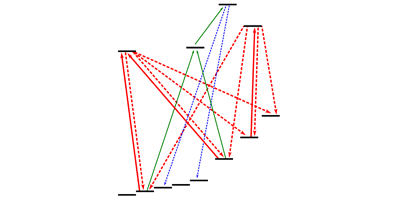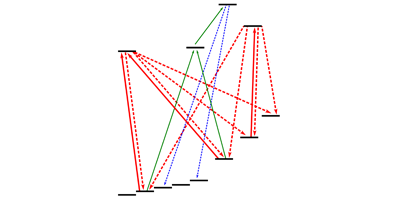Molecular Speed Bump
Physicists have explored many interesting phenomena, including Bose-Einstein condensation, by trapping atoms with temperatures a tiny fraction of a degree above absolute zero. Doing the same for molecules is harder, but in Physical Review Letters researchers report using lasers to significantly slow molecules. When combined with previously demonstrated molecular cooling schemes, this should allow new types of molecules to be trapped, an important prerequisite to studying chemical reactions and quantum phenomena at ultralow temperatures.
To prepare ultracold diatomic molecules, one approach is to bind together pairs of ultracold atoms. John Barry and colleagues at Yale University, Connecticut, are exploring a different approach: laser slowing and cooling of existing molecules. The net momentum imparted by many photons, absorbed from a laser beam and then re-emitted in a random direction, can slow molecules enough so that they can then be trapped and cooled. A big challenge is that the photon energy can easily be diverted into heating of the internal vibrations or rotations of the molecules. The researchers chose to study strontium monofluoride, which can be manipulated to nearly eliminate this heating. They directed a beam of these molecules head-on into a laser tuned to excite a specific electronic transition of the molecule. They also added other lasers in order to return any vibrationally excited molecules back to the ground state.
The researchers slowed as much as of the molecules in their original beam from meters per second to less than , which required each molecule to absorb and re-emit some photons. Further slowing, needed to capture the molecules in a trap, will require reduction of the sideways velocity of the molecules, which is increased by the random photon emissions during the slowing process. – Don Monroe





